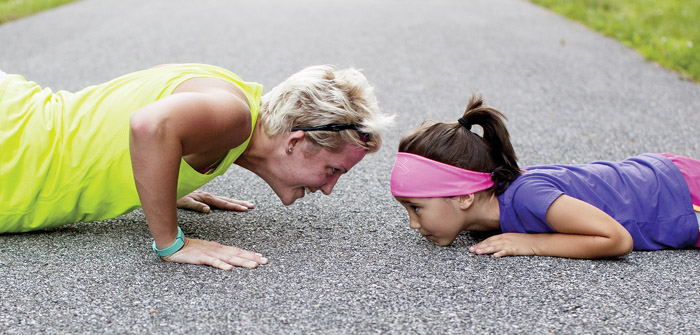(Photo above | Pixabay)
While many relish the opportunity to take both play and exercise outdoors as the weather continues to warm, Bend physical therapist Rob Hollander of Alpine Physical Therapy reminds us that beneficial exercise comes with an added level of risk when done in the summertime heat.
“Heat adds an extra level of stress to the body as you exercise and can be dangerous if you don’t go about it mindfully,” Hollander said. “Whether you’re jogging, golfing, or doing chores around the house, if you don’t take certain cautions when exercising in the heat, you can put yourself at serious risk of illness and injury.”
According to the Hollander, when both exercise and environmental temperatures combine to increase your body’s temperature, your body responds by circulating more blood to the skin for cooling, leaving less blood for your muscles. This increases your heart rate while putting you at risk of developing a heat-related illness such as cramps, heat exhaustion and even heat stroke.
“If you’re in the summer’s heat and you develop muscle cramps, become nauseous, feel weak, or suffer a headache, dizziness or confusion, stop exercising immediately,” Hollander added. “Get out of the heat, drink some cold water or a sports drink, and see a medical professional if symptoms continue for more than about a half-hour.”
The key to experiencing safe summer exercise and workouts, says Hollander, is to avoid ever getting to this point. To help ensure this, he offers the following tips:
Practice Good Timing: Avoid midday workouts by exercising early in the morning or late in the evening. By avoiding the hottest time of the day, you’ll also be avoiding the sun’s harmful rays.
Acclimate Your Body: It can take a week or two for your body to acclimate to hotter weather, so take it easy during the early summer heat. Start the season slowly, gradually increasing workout length and intensity.
Drink Early & Often: Drink before, during and after your workout. And don’t wait until you’re thirsty as this is often a sign you’re already dehydrated. Hydration is a key to preventing heat-related illness.
Dress for Heat/Protection: Wear light, loose-fitting, bright-colored clothing that will help sweat evaporate, keeping your body cool. Also, protect yourself by wearing sunscreen with a high SPF.
According to Hollander, establishing a workout catered to your personal strengths and weaknesses, especially when faced with extreme weather conditions, is also essential for maintaining a safe exercise regimen. The team at Alpine Physical Therapy provide clients comprehensive strength and movement assessments that provide the foundation for developing individualized plans for fitness, health and performance enhancement.
alpinephysicaltherapy.com





